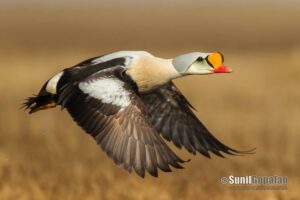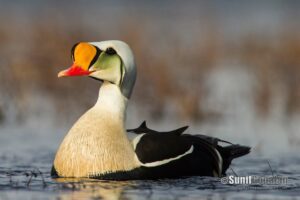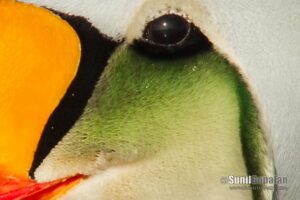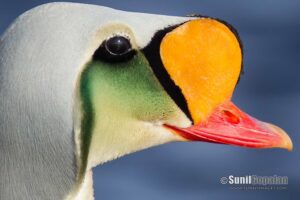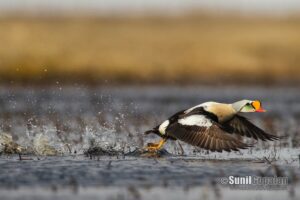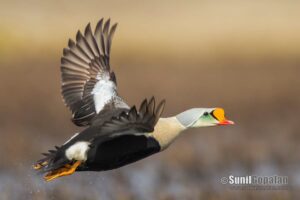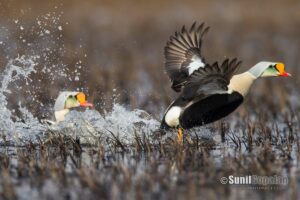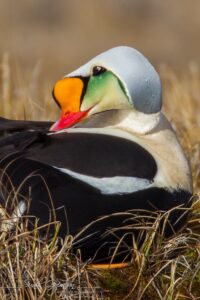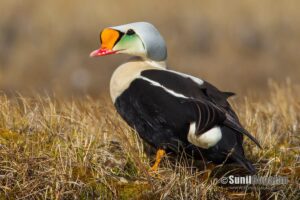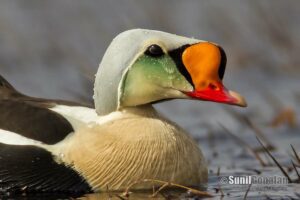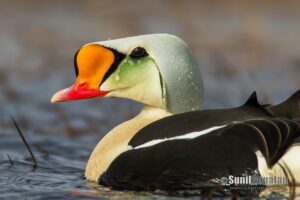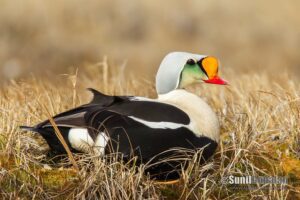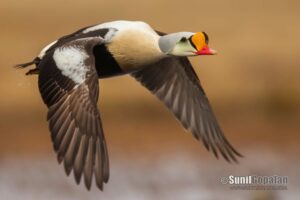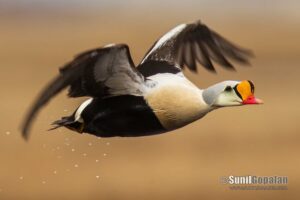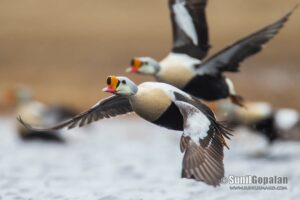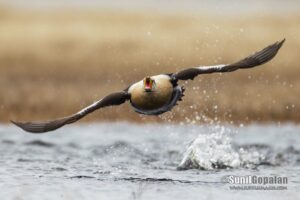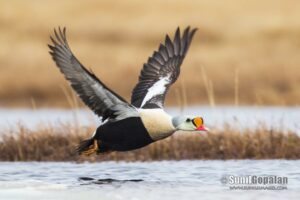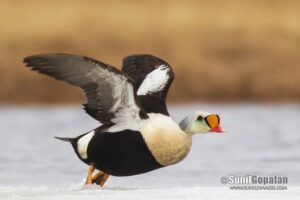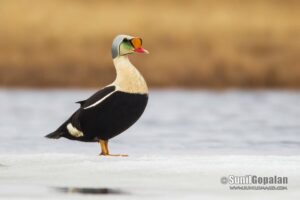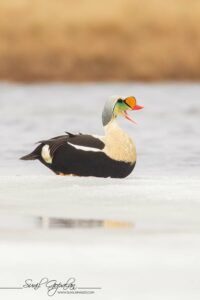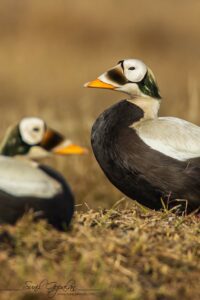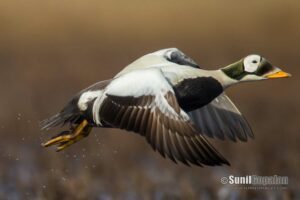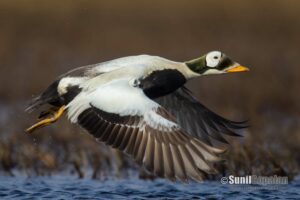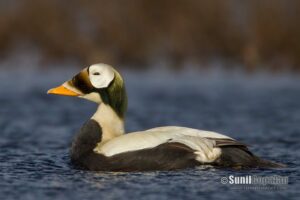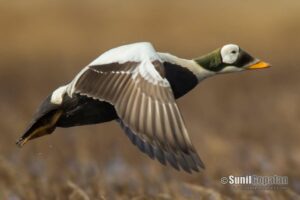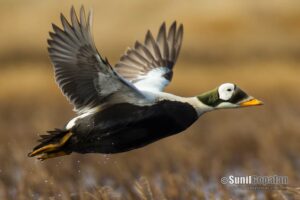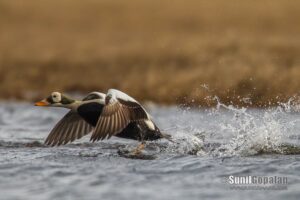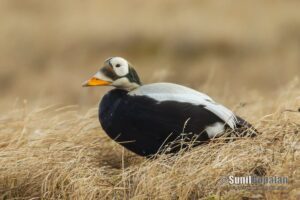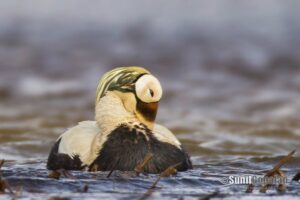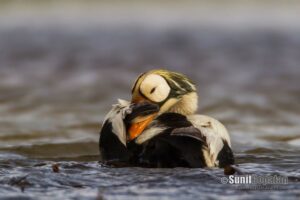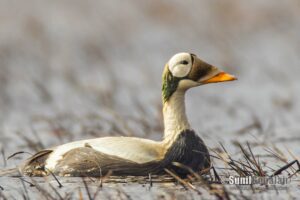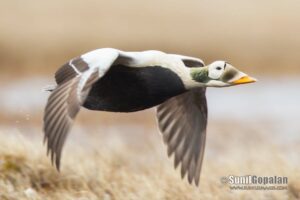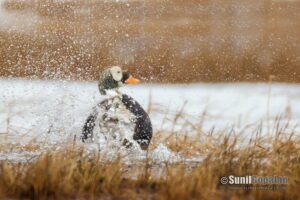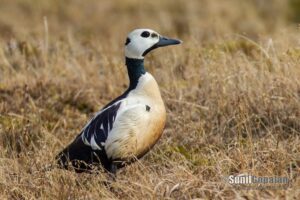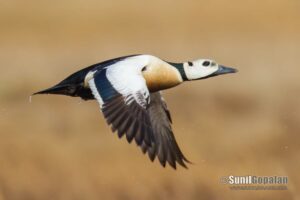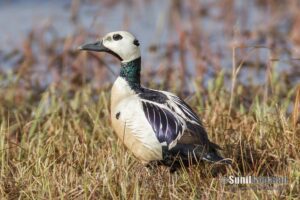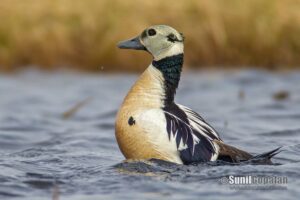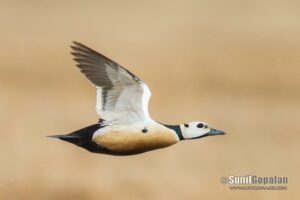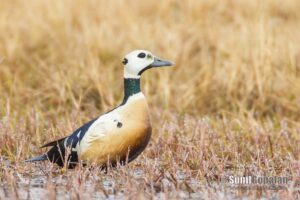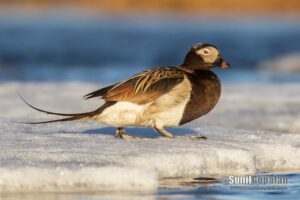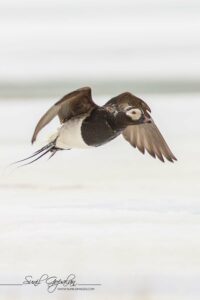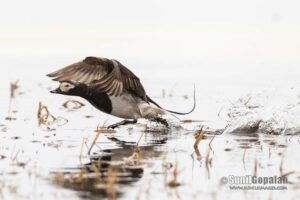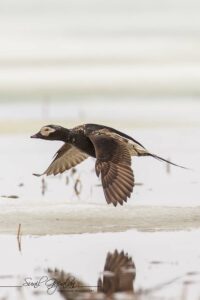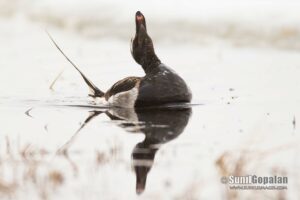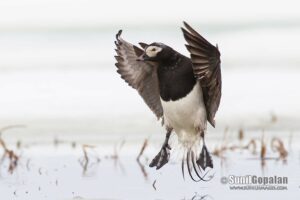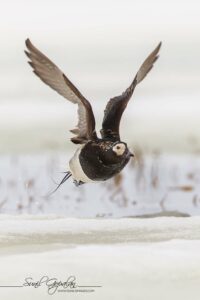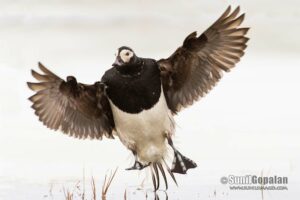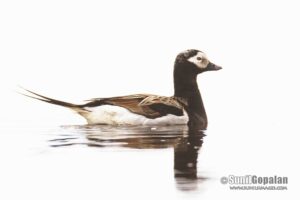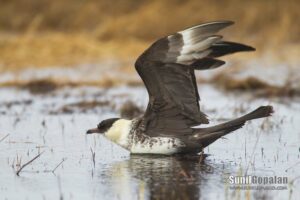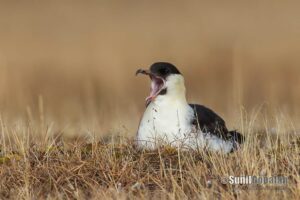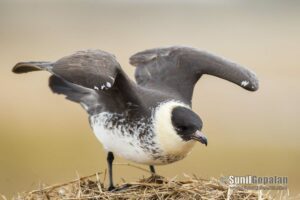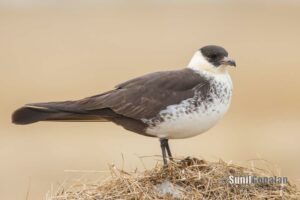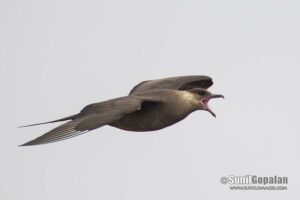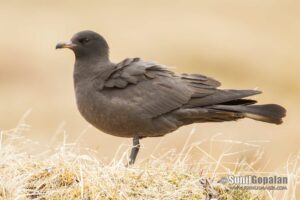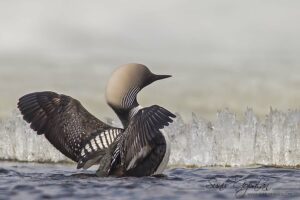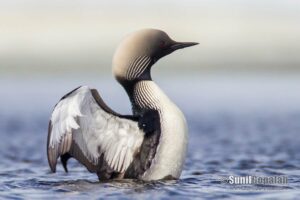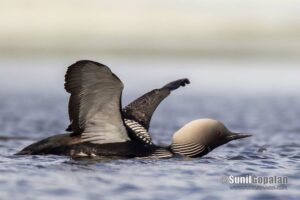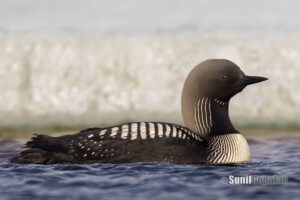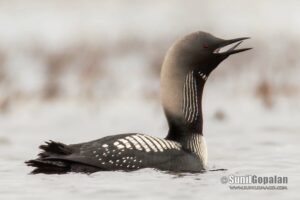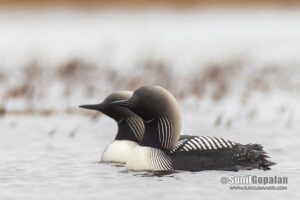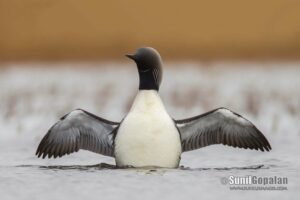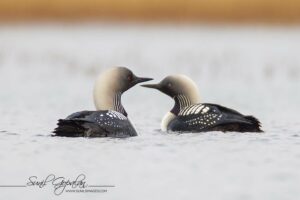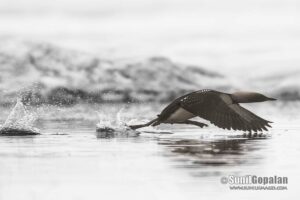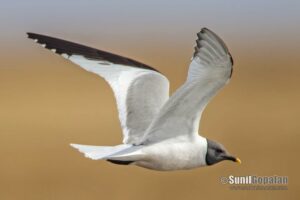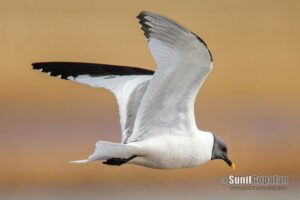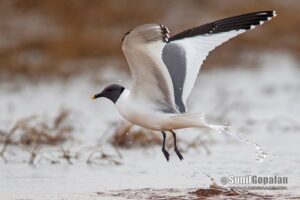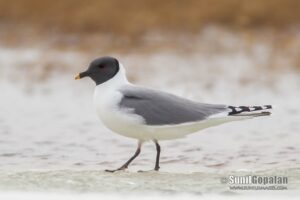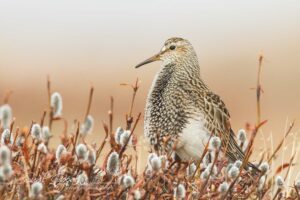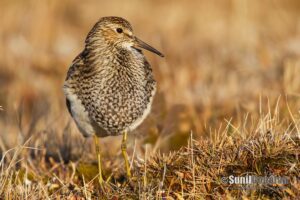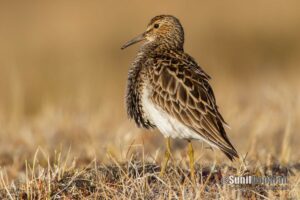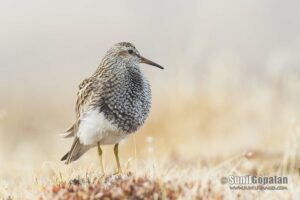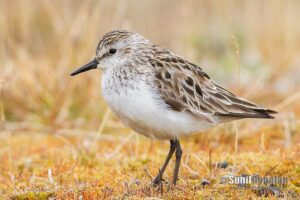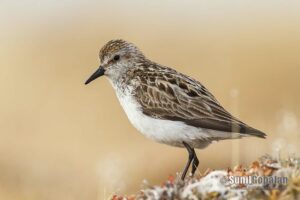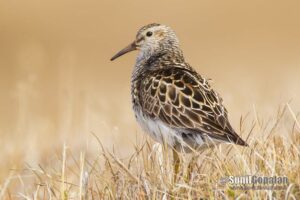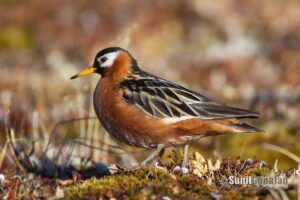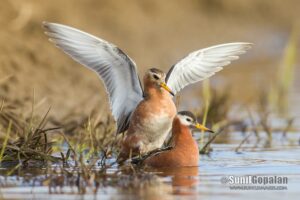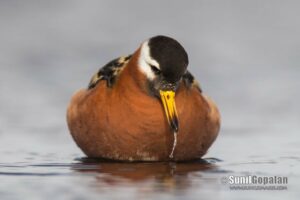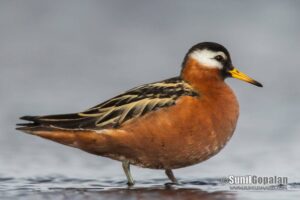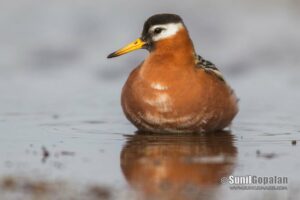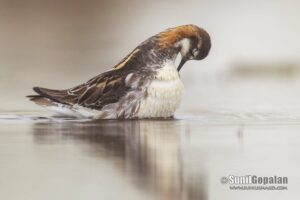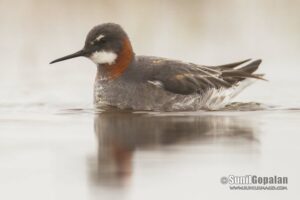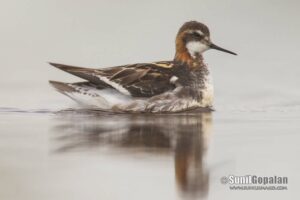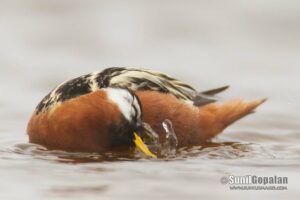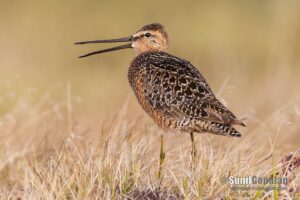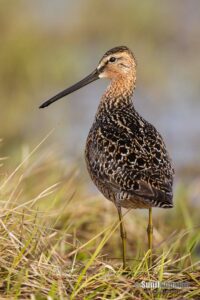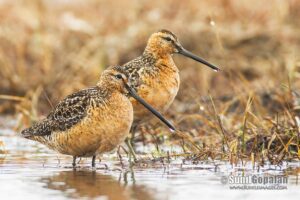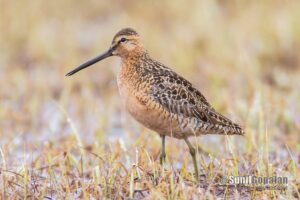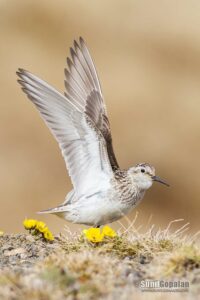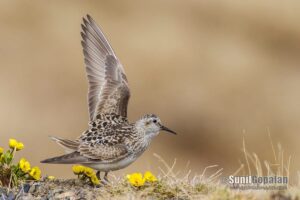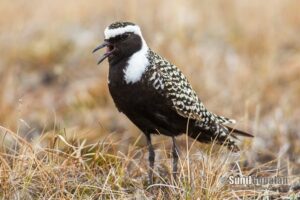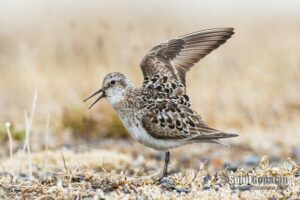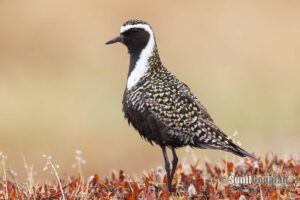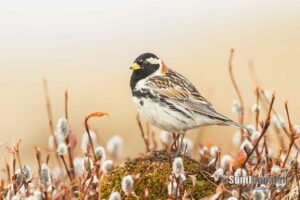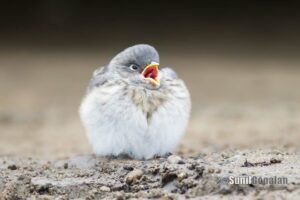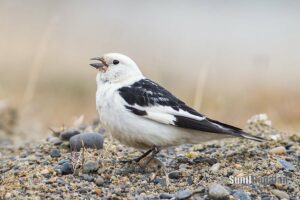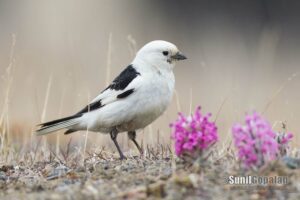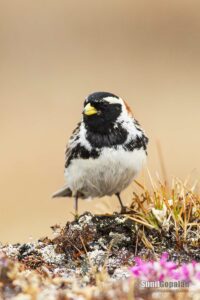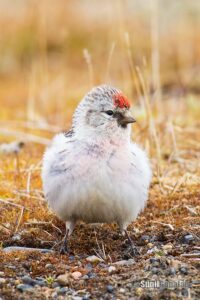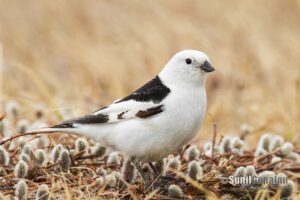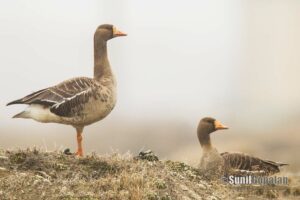I’m just back from having spent a week observing and photographing breeding birds in the tundra of Barrow, Alaska – the northernmost city in the United States. The trip was exhausting and exhilarating at the same time.
My flights involved connecting through Minneapolis, Seattle, Anchorage, Fairbanks and Prudhoe Bay for a grand total of over 20 hours before stepping foot in the small community of Barrow. No rest for the weary — I met up with some great photographers and we headed out to drive the surrounding dirt roads in search of birds that very day.
It was fascinating to see all the unfamiliar species and then some more to see the familiar ones in full breeding regalia. The target local specialties were three species of Eider – King, Spectacled and Steller’s. As you will see, I got all three.
King Eider was by far the most common. We found several in various ponds on almost each day out. The features on the breeding male made for great close-ups in addition to the usual shots. The male seems to hang around for a very short period each year before returning to more marine environments. We also managed to stumble (inadvertently) on a nest with eggs and quickly beat a hasty retreat.
Spectacled Eider was possibly the most spectacular. Much fewer in number and tougher to photograph. This is a designated Federally Threatened species. We ended up getting our first chance while we photographing a pair of King Eiders when one flew right in and landed a couple of dozen feet away in the water.
Steller’s Eider were the hardest to find. With a very limited range and the smallest of the three – and another Federally Threatened species.
The most common duck across the area was the Long-tailed Duck. Quite the stellar bird even though they were all over the place. Northern Pintail were also present in decent numbers but almost unapproachable.
Another staple of the tundra are the Jaegers. Pomarine Jaegers were present in high numbers, followed by Parasitic. We only managed one fly-by Long-tailed (unphotographed) but it concluded a full sweep of that lot.
I reserve a special place in my heart for the Pacific Loon — this bird with its subtle features is very hard to photograph adequately without good light which was hard to come by in spite of the midnight sun. Here are a handful I managed to capture.
Another bird of special interest was the Sabine’s Gull. They were repeat visitors at the end of one of the roads and while the shots aren’t stellar, it’s easy to see why the sightings made me pretty happy. We unfortunately found a few dead as well – looked like victims of target practice.
Shorebirds were easily led in numbers and loudness by Pectoral Sandpipers who made their presence known across the tundra. We also snagged breeding Long-billed Dowitcher, Dunlin (including one banded in 2010), Least and Semipalmated Sandpiper and the ubiquitous Red and Red-necked Phalaropes. In much fewer numbers we also had displaying Baird’s Sandpiper and American Golden Plover.
I’ll round this post up with some of the other birds we observed – including Lapland Longspur, Snow Bunting, Common Redpoll and Greater White-fronted Geese.
Other unphotographed but noteworthy birds included several Snowy Owls and a lifer Yellow-billed Loon. I subsequently moved on to spend a week on St. Paul Island in the Bering Sea. Watch for that post!
